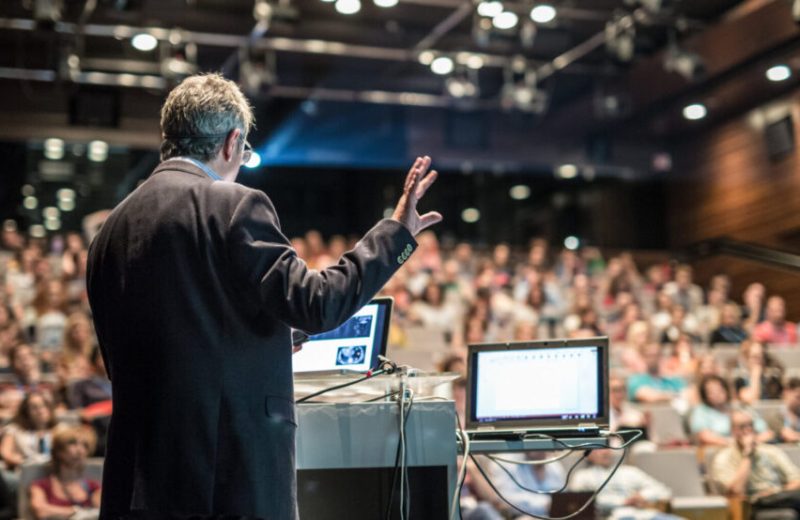Trainers of the Lost Arc
As a lifelong entertainer and former Walt Disney World team member, I’ve designed and delivered many entertainment and learning programs. It strikes me that the dynamic arc of any good entertainment should be applied to learning experiences. What follows are three steps that will help ramp up learning excitement and engagement in your programs.
Arc Step One – Start with a Bang
A show usually begins with a bang. The first few minutes of a performance are critical. The audience must be drawn into the entertainment quickly. If not, the entertainment cannot hold the audience’s attention. Viewers are, additionally, distracted as they munch their popcorn, turn their cell phones to silent, talk to their companions, and settle into their seats. Movies combat these distractions by delivering a wiz-bang opening that pulls viewers in while avoiding critical information that might get lost as people settle in.
Many of these same dynamics are present at the start of training as attendees enter and acclimate to the learning environment stimuli. Raiders of the Lost Ark, the first Indiana Jones movie, is an excellent example of a movie that starts with a bang. From the opening scene, where the Paramount mountain logo melds into an actual mountain until Indiana Jones says, “I hate snakes,” the attention-grabbing action leaves no doubt that this is a movie to pay attention to.
Viewing a presentation through the entertainment filter but without the snakes, we can see how a dynamic, attention-grabbing, and content-aligned opening can draw the learners directly into the content to be presented. Trainers, presenters, and teachers do, however, often make attention-numbing mistakes during the opening segment.
A trainer who starts with objectives is delivering valuable information before the learners are focused enough to absorb it. Conversely, a presenter who starts with the location of restrooms, participant introductions, facilitator bios, and other asides squanders attention. A trainer who starts with introductions of all the participants is inviting participants to check out once their introduction is done.
The best way to start, through the entertainment perspective, is with an experience – not an ice breaker – that, without being too detailed, thrusts the participants into the content to be taught.
An orientation, for example, could start with the assignment of a “mission.” Built around aligning the participant with the organization’s mission, it could start with a demonstration of what a mission is by making the participants search for their workbook packet in the room. A leadership program could start with the facilitator directing the participants to divide into teams and rearrange the tables and chairs to reflect their new team. And customer service training could start with a demonstration of terrible service.
The point is to capture attention, heighten interest in the subject, and set up the program that will follow.
Arc Step Two – Deliver Content in an Ever-Increasing Arc
Once the performance bona fides have been established, the performance can breathe. Most entertainment will fall rapidly from very high energy to extremely low energy. From this point forward, the performance builds slowly. Throughout the performance, the excitement level rises and falls in an arc where each high is a little higher than the one before but never obtains the highest height possible. Each low is, likewise, as low as, if not lower than, the one before. The performance functions much like a good thrill ride with tension building, followed by a release, followed by tension, followed by release, all in an ever-expanding upward arc that eventually explodes in a final climax.
Presentations should, likewise, stop and breathe after the opening experience. This is the time to conduct introductions, share logistics, and showcase the course objectives. From this point forward, a presentation can build and fall into continually expanding arcs. Each new topic area should begin with its own mini-opening and end with a mini-climax. Each topic area should build on the one before it as it delivers more engaging and dynamic information and experiences.
Arc Step Three – End with an Even Bigger Bang
Successful movies, books, television shows, and live entertainment usually end with a build-up of tension so immense that the audience can barely stand it. Like an overfilled balloon, the tension finally explodes in resolution. The climax resolves the major conflicts between the characters, answers the questions posed in the entertainment, and suggests the next steps that will happen beyond the ending of the experience. The climax, additionally, often relates back to the opening moments of the entertainment, thus providing a tidy bookend to the entertainment. A successful presentation already delivers its own resolution. Tension builds during learning as participants are exposed to new information and tasks to be mastered. That tension relaxes as learners become fluent with the content and action-plan their next steps beyond the learning environment. When an opening experience is fully integrated into the subject matter to follow, the presenter can loop back to it at closing and wrap up the presentation in a tidy package.
Where entertainment strives to create an intense feeling of enjoyment, a learning program seeks to change behavior. Both reach satisfactory climaxes when information has been gained, enjoyment levels have been reached, and the next steps beyond the moment are contemplated. The climax in Raiders of the Lost Ark is the scene where the ark is opened, and the villains melt away. It is a thrilling scene. For a learning program, the tension release is often the demonstration that the participants have learned the new skills and their identification of how those skills can/will be applied in their jobs and lives.
Instructional Design Blog – Adding Excitement to Your Programs
Sometimes, the movie tension is so high that films close with a coda: a scene that hints at future adventure while gently easing the audience off of the climax high. Raiders coda is the reveal that the US government has a whole warehouse full of supernatural wonders to be explored on a different day. For training programs, no such warehouse is necessary, but the participants should leave with the confidence that they have stored a number of “wonders” in their brains for future application. In this way, you can become a trainer of the lost arc.
















